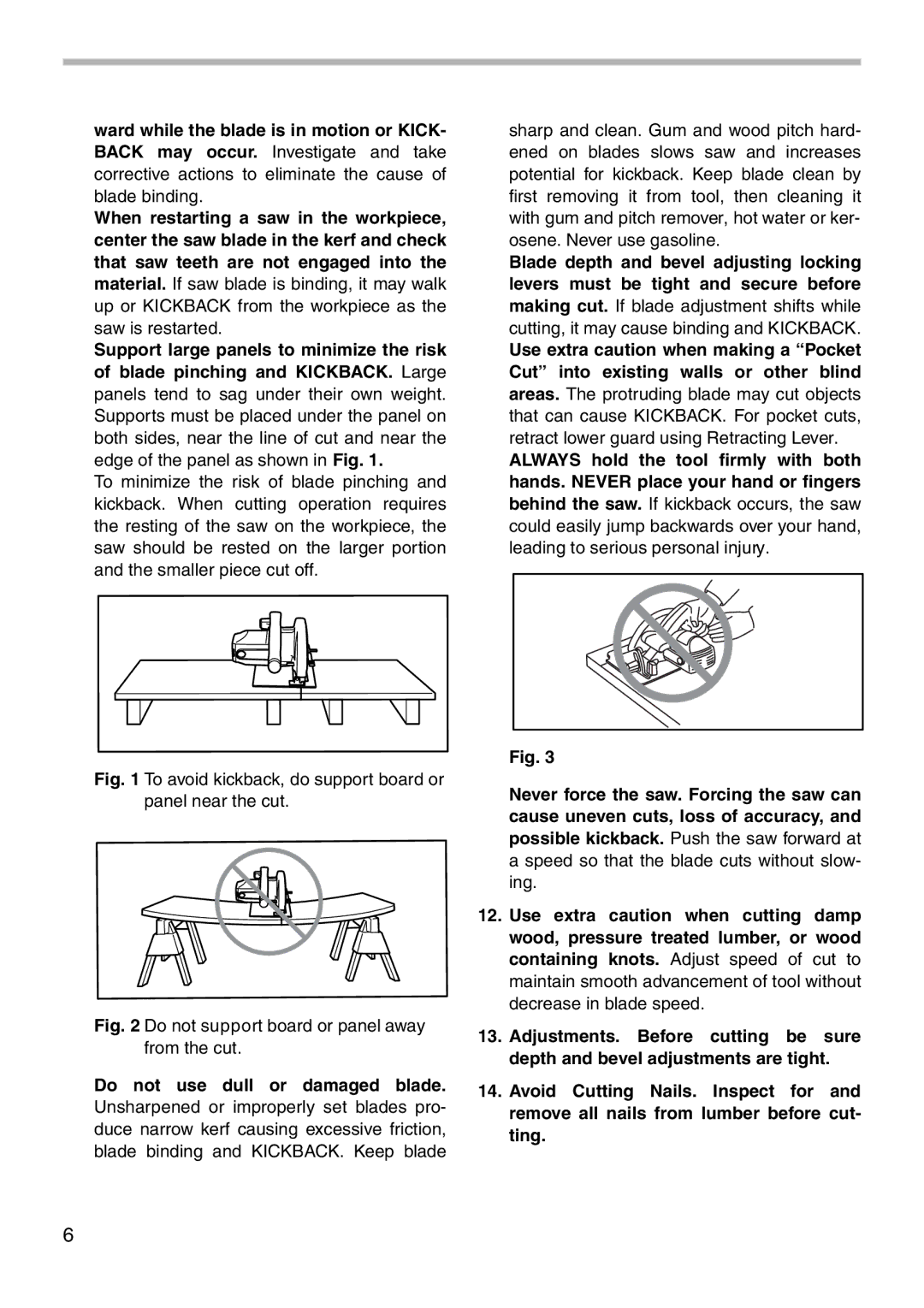
ward while the blade is in motion or KICK-
BACK may occur. Investigate and take corrective actions to eliminate the cause of blade binding.
When restarting a saw in the workpiece, center the saw blade in the kerf and check that saw teeth are not engaged into the material. If saw blade is binding, it may walk
up or KICKBACK from the workpiece as the saw is restarted.
Support large panels to minimize the risk
of blade pinching and KICKBACK. Large panels tend to sag under their own weight. Supports must be placed under the panel on both sides, near the line of cut and near the edge of the panel as shown in Fig. 1.
To minimize the risk of blade pinching and kickback. When cutting operation requires the resting of the saw on the workpiece, the saw should be rested on the larger portion and the smaller piece cut off.
Fig. 1 To avoid kickback, do support board or panel near the cut.
Fig. 2 Do not support board or panel away from the cut.
Do not use dull or damaged blade.
Unsharpened or improperly set blades pro- duce narrow kerf causing excessive friction, blade binding and KICKBACK. Keep blade
sharp and clean. Gum and wood pitch hard- ened on blades slows saw and increases potential for kickback. Keep blade clean by first removing it from tool, then cleaning it with gum and pitch remover, hot water or ker- osene. Never use gasoline.
Blade depth and bevel adjusting locking levers must be tight and secure before
making cut. If blade adjustment shifts while cutting, it may cause binding and KICKBACK.
Use extra caution when making a “Pocket Cut” into existing walls or other blind
areas. The protruding blade may cut objects that can cause KICKBACK. For pocket cuts, retract lower guard using Retracting Lever.
ALWAYS hold the tool firmly with both hands. NEVER place your hand or fingers
behind the saw. If kickback occurs, the saw could easily jump backwards over your hand, leading to serious personal injury.
Fig. 3
Never force the saw. Forcing the saw can cause uneven cuts, loss of accuracy, and possible kickback. Push the saw forward at
a speed so that the blade cuts without slow- ing.
12.Use extra caution when cutting damp wood, pressure treated lumber, or wood containing knots. Adjust speed of cut to maintain smooth advancement of tool without decrease in blade speed.
13.Adjustments. Before cutting be sure depth and bevel adjustments are tight.
14.Avoid Cutting Nails. Inspect for and remove all nails from lumber before cut- ting.
6
